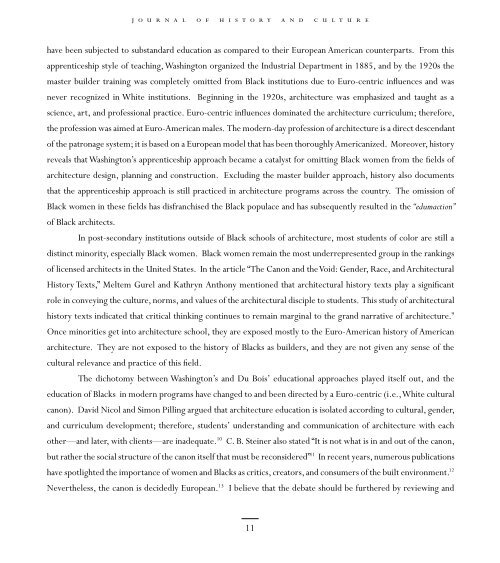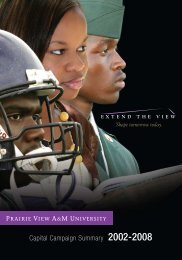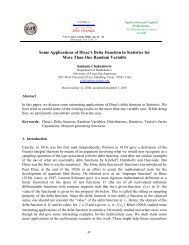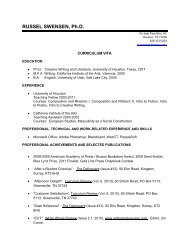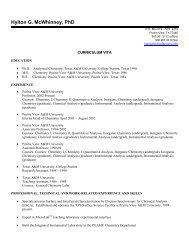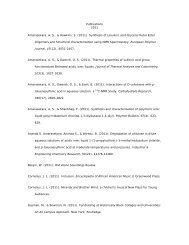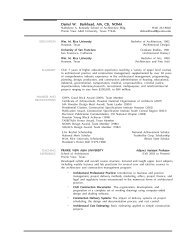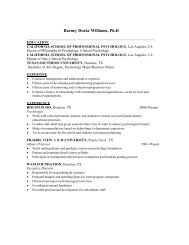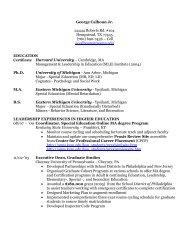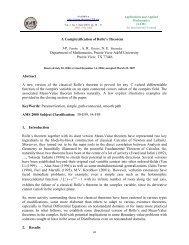Journal of History and Culture Journal of History and Culture
Journal of History and Culture Journal of History and Culture
Journal of History and Culture Journal of History and Culture
You also want an ePaper? Increase the reach of your titles
YUMPU automatically turns print PDFs into web optimized ePapers that Google loves.
j o u r n a l o f h i s t o r y a n d c u l t u r e<br />
have been subjected to subst<strong>and</strong>ard education as compared to their European American counterparts. From this<br />
apprenticeship style <strong>of</strong> teaching, Washington organized the Industrial Department in 1885, <strong>and</strong> by the 1920s the<br />
master builder training was completely omitted from Black institutions due to Euro-centric influences <strong>and</strong> was<br />
never recognized in White institutions. Beginning in the 1920s, architecture was emphasized <strong>and</strong> taught as a<br />
science, art, <strong>and</strong> pr<strong>of</strong>essional practice. Euro-centric influences dominated the architecture curriculum; therefore,<br />
the pr<strong>of</strong>ession was aimed at Euro-American males. The modern-day pr<strong>of</strong>ession <strong>of</strong> architecture is a direct descendant<br />
<strong>of</strong> the patronage system; it is based on a European model that has been thoroughly Americanized. Moreover, history<br />
reveals that Washington’s apprenticeship approach became a catalyst for omitting Black women from the fields <strong>of</strong><br />
architecture design, planning <strong>and</strong> construction. Excluding the master builder approach, history also documents<br />
that the apprenticeship approach is still practiced in architecture programs across the country. The omission <strong>of</strong><br />
Black women in these fields has disfranchised the Black populace <strong>and</strong> has subsequently resulted in the “edumaction”<br />
<strong>of</strong> Black architects.<br />
In post-secondary institutions outside <strong>of</strong> Black schools <strong>of</strong> architecture, most students <strong>of</strong> color are still a<br />
distinct minority, especially Black women. Black women remain the most underrepresented group in the rankings<br />
<strong>of</strong> licensed architects in the United States. In the article “The Canon <strong>and</strong> the Void: Gender, Race, <strong>and</strong> Architectural<br />
<strong>History</strong> Texts,” Meltem Gurel <strong>and</strong> Kathryn Anthony mentioned that architectural history texts play a significant<br />
role in conveying the culture, norms, <strong>and</strong> values <strong>of</strong> the architectural disciple to students. This study <strong>of</strong> architectural<br />
history texts indicated that critical thinking continues to remain marginal to the gr<strong>and</strong> narrative <strong>of</strong> architecture. 9<br />
Once minorities get into architecture school, they are exposed mostly to the Euro-American history <strong>of</strong> American<br />
architecture. They are not exposed to the history <strong>of</strong> Blacks as builders, <strong>and</strong> they are not given any sense <strong>of</strong> the<br />
cultural relevance <strong>and</strong> practice <strong>of</strong> this field.<br />
The dichotomy between Washington’s <strong>and</strong> Du Bois’ educational approaches played itself out, <strong>and</strong> the<br />
education <strong>of</strong> Blacks in modern programs have changed to <strong>and</strong> been directed by a Euro-centric (i.e., White cultural<br />
canon). David Nicol <strong>and</strong> Simon Pilling argued that architecture education is isolated according to cultural, gender,<br />
<strong>and</strong> curriculum development; therefore, students’ underst<strong>and</strong>ing <strong>and</strong> communication <strong>of</strong> architecture with each<br />
other—<strong>and</strong> later, with clients—are inadequate. 10 C. B. Steiner also stated “It is not what is in <strong>and</strong> out <strong>of</strong> the canon,<br />
but rather the social structure <strong>of</strong> the canon itself that must be reconsidered” 11 In recent years, numerous publications<br />
have spotlighted the importance <strong>of</strong> women <strong>and</strong> Blacks as critics, creators, <strong>and</strong> consumers <strong>of</strong> the built environment. 12<br />
Nevertheless, the canon is decidedly European. 13 I believe that the debate should be furthered by reviewing <strong>and</strong><br />
11


